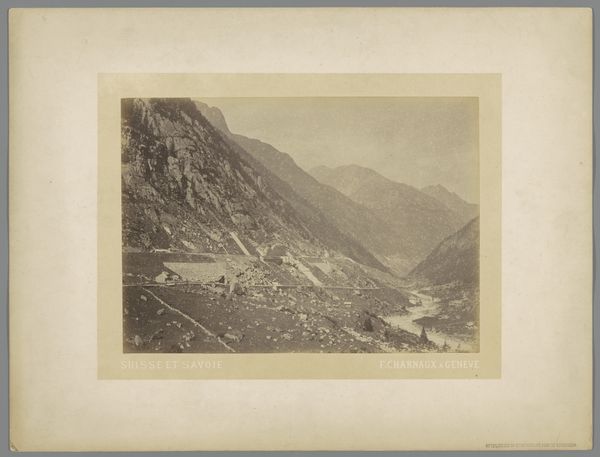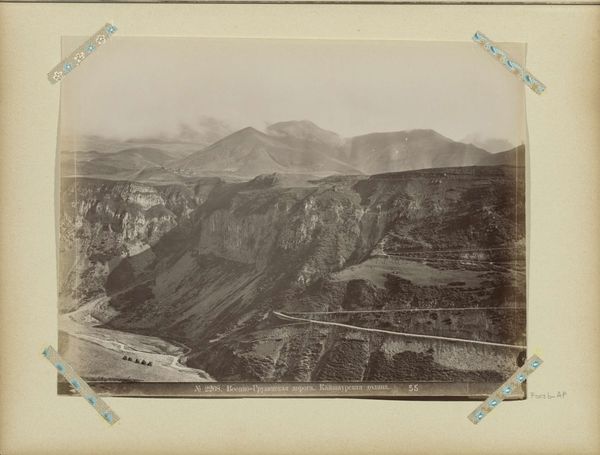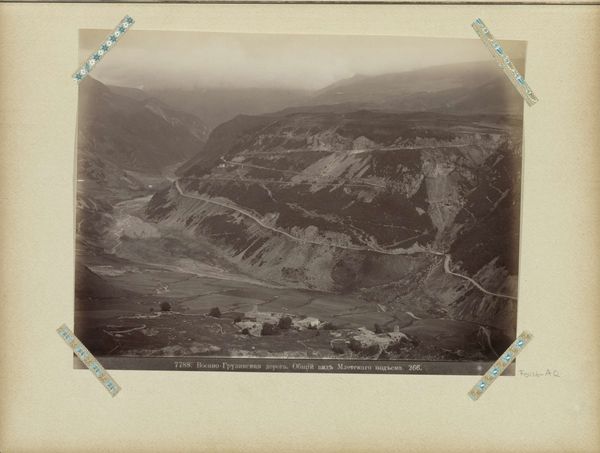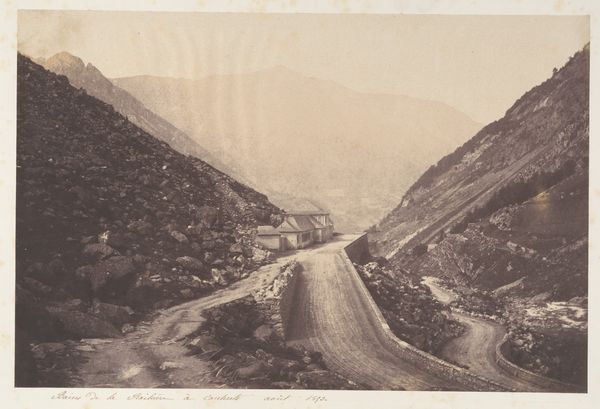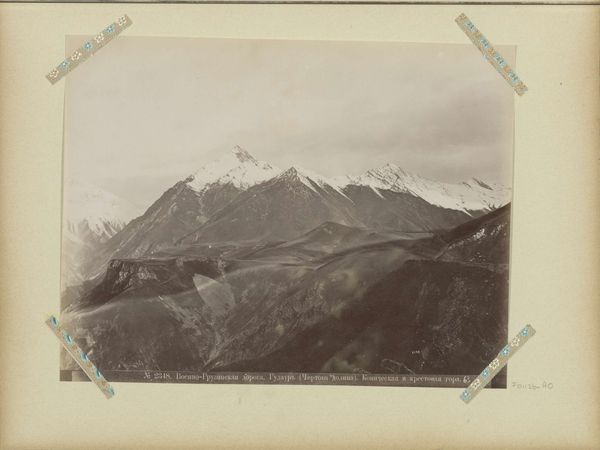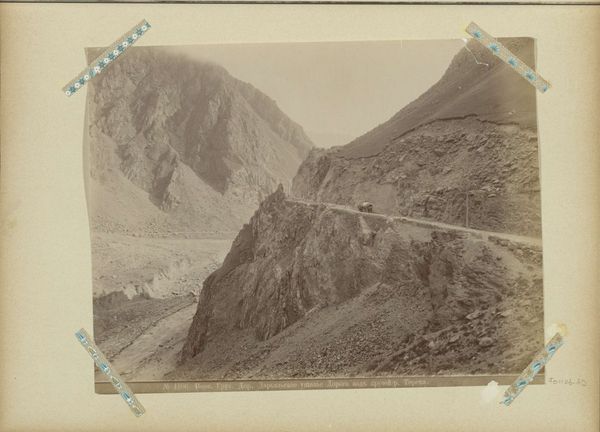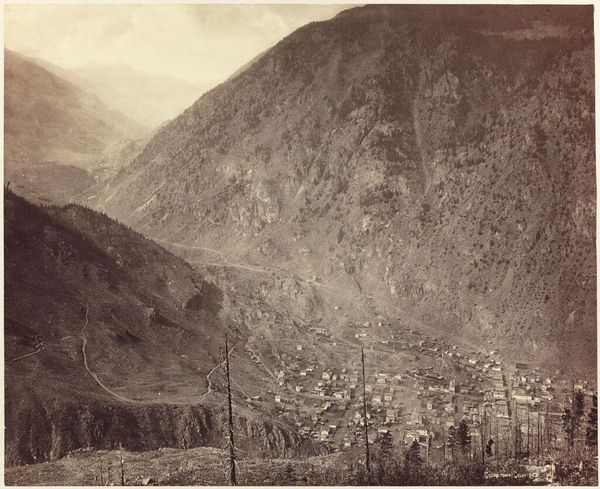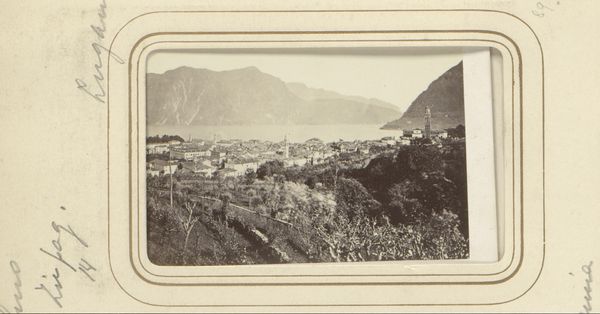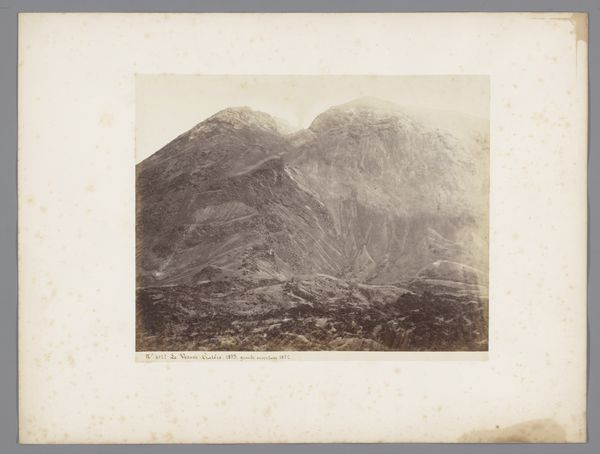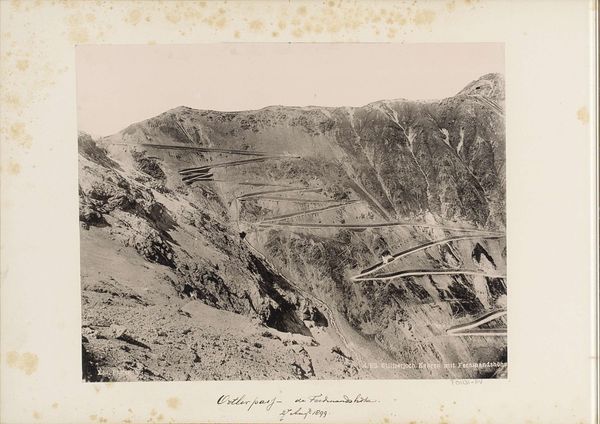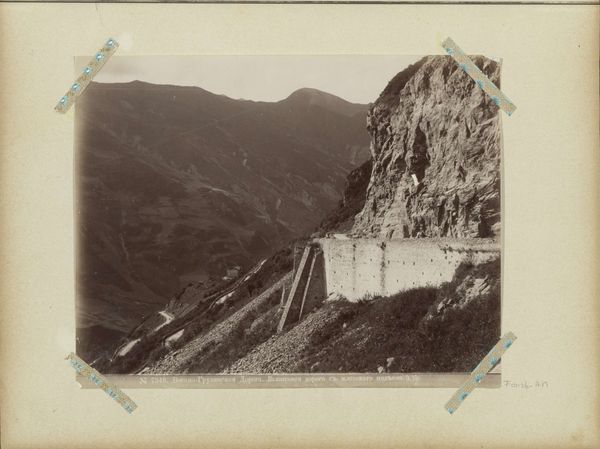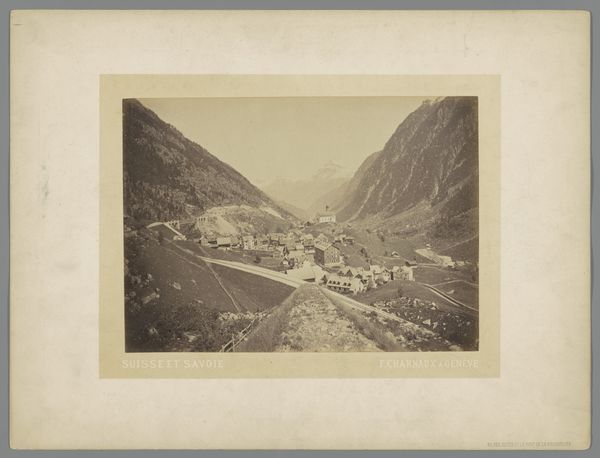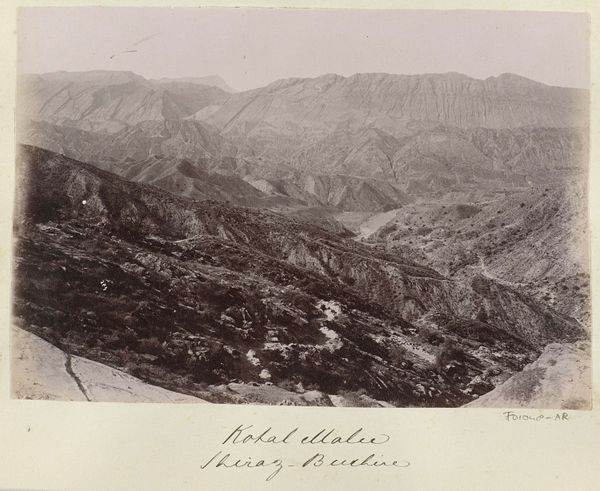
Berglandschap met dorp aan de militaire weg in Georgië c. 1890 - 1900
0:00
0:00
photography, albumen-print
#
landscape
#
photography
#
orientalism
#
albumen-print
Dimensions: height 207 mm, width 260 mm
Copyright: Rijks Museum: Open Domain
Editor: Here we have Dimitri Ermakov's "Mountain Landscape with a Village on the Military Road in Georgia," an albumen print from around 1890 to 1900. The vastness of the mountains is striking, but there's also a vulnerability to the tiny village nestled within it. What do you see when you look at this piece? Curator: It’s more than just a landscape, isn’t it? Consider the context: this photograph comes from an era of intense Russian expansion into the Caucasus. The "military road" in the title wasn't just for trade; it was a tool of imperial control. Look closely; how does the photographer’s perspective—high up, almost godlike—contribute to a sense of power dynamics? Editor: I hadn't thought about the road itself as a symbol of dominance, but it's so clear now! It's like the landscape is being surveyed and subjugated. But isn't there an element of admiration too, a kind of romanticism for the 'untamed' Orient? Curator: Absolutely. Orientalism is layered, never simple admiration. It’s about defining oneself against an "other," creating hierarchies. Ermakov, while documenting, also participated in constructing an image of the Caucasus as simultaneously beautiful and in need of ‘civilizing.’ Where do you think local voices and perspectives might fit in to challenge such representations? Editor: That’s something I need to think more about. Maybe researching contemporary accounts from the people who lived there could offer another perspective. Curator: Precisely! By understanding the political and social forces at play, we can unpack the complex narratives embedded within this seemingly straightforward landscape photograph. Editor: It makes you realize a picture can be beautiful, but it can also be a powerful statement – consciously or unconsciously. Thanks for illuminating all these unseen facets for me. Curator: And thank you for prompting us to consider these complexities. It is in grappling with these issues that we come to a more nuanced understanding of both the artwork and ourselves.
Comments
No comments
Be the first to comment and join the conversation on the ultimate creative platform.
